SHOE REVIEW: ASICS Metaspeed Sky
ASICS wanted to create a shoe to rival other super shoes on the market, and they definitely succeeded with the Metaspeed Sky
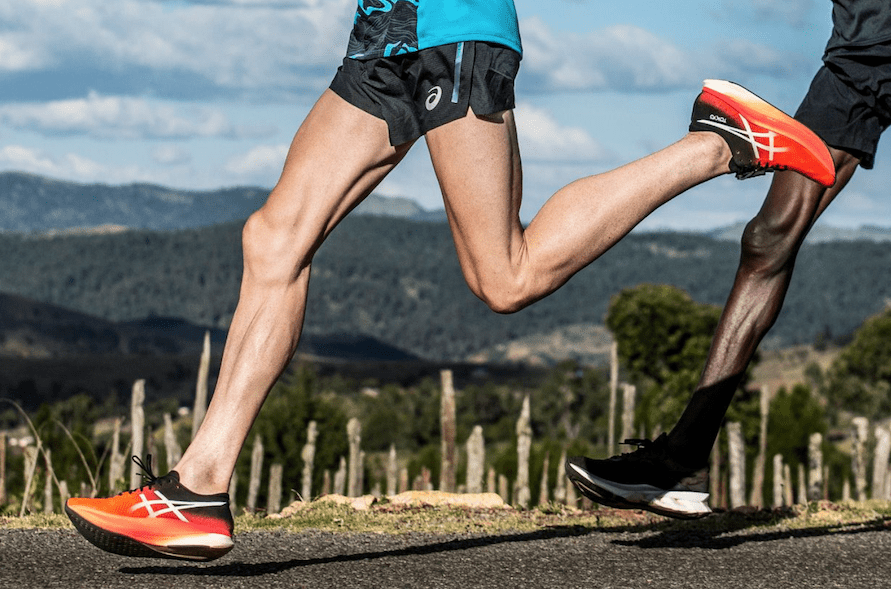 Photo by:
ASICS
Photo by:
ASICS
The ASICS Metaspeed Sky is a fast shoe. That’s the first thing you’ll notice when you try it out for yourself. We’re living in the era of super shoes, and if you don’t believe that shoe technology is advancing at lightning pace, the Metaspeed Sky will convince you. Along with the Metaspeed Edge (which will be released in June), the Sky is part of ASICS’s appropriately named ‘Speed Series,’ and if you’re aiming for a new PB at any distance from the 5K to the marathon, this shoe will definitely help. The price tag might scare you when you first see it (the Sky retails at $325), but the shoe delivers as advertised, and you will get exactly what you pay for with the Metaspeed.
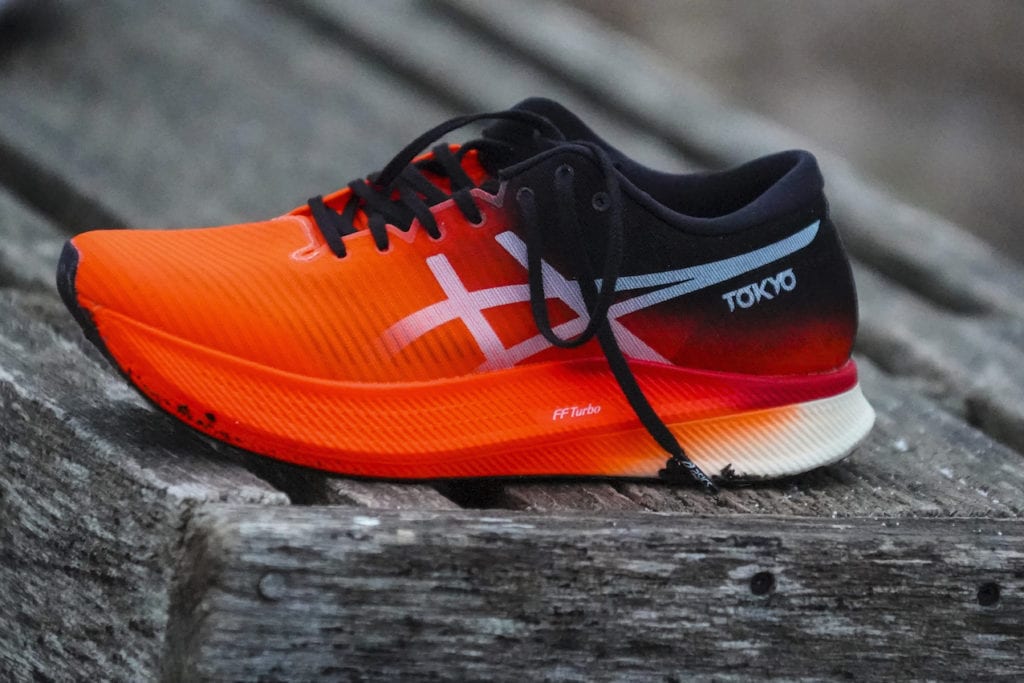
Weight: 199 g for men’s size 9, 165 g for women’s size 7
Stack: 33 mm for men, 31 mm for women
Drop: 5 mm
MSRP: $325.00
Available: Now at asics.com
Sky vs. Edge
Before getting started specifically on the Sky, we should compare it to the Edge. Both are Metaspeed shoes, and they look quite similar. They both have carbon plates and bouncy midsoles, and they cost the same. The key differences (which can be viewed here) come in the weight, the midsole thickness and the forefoot curvature. But the question remains: why does ASICS have two shoes with the same name?
RELATED: ASICS releases spikeless spikes
It’s pretty simple: the ASICS Institute of Sport Science (ISS) set out to design the company’s next super shoe, and early research revealed that there are two main styles of running, which the ISS team named ‘cadence’ and ‘stride.’ Cadence runners lengthen their stride and increase their cadence when they want to pick up speed, while stride runners only lengthen their stride without changing their cadence. ISS researchers found that most shoes on the market today benefit stride runners, which means cadence runners have had to adapt to shoes that aren’t built for them. In an attempt to fix this issue, the ISS designed two shoes: one for stride runners (the Sky) and one for cadence runners (the Edge).
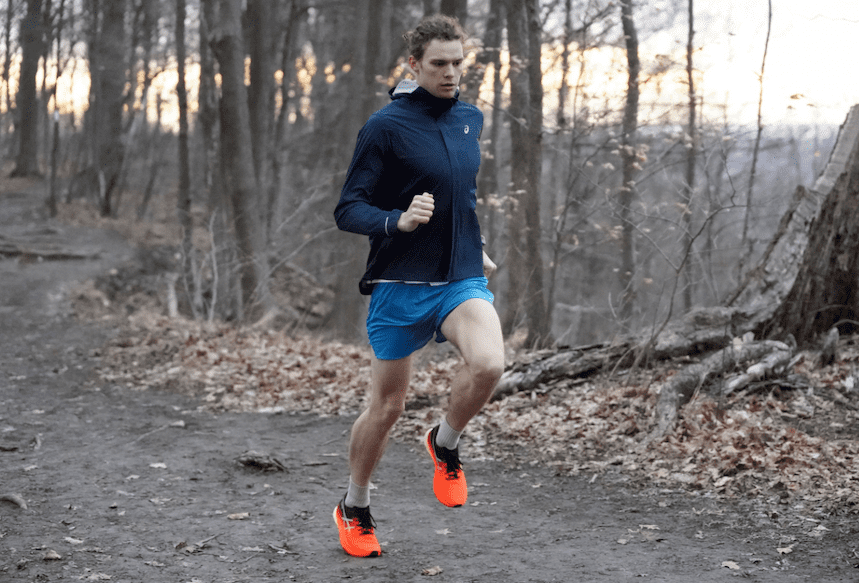
The upper
The Metaspeed Sky’s upper is comfortable, and it provides a roomy fit, especially in the forefoot. This isn’t a negative (your foot won’t move around in the forefoot), and instead it makes the shoe more accommodating for runners with wide feet. If you don’t have wide feet and you find that the shoe is too roomy, a thicker sock will fix that problem. The upper is also quite breathable, as it has a mesh that allows for good airflow, which helps to cool your feet. Overall, the Metaspeed’s upper makes for a pleasant ride, even when you take it for hard and fast runs.
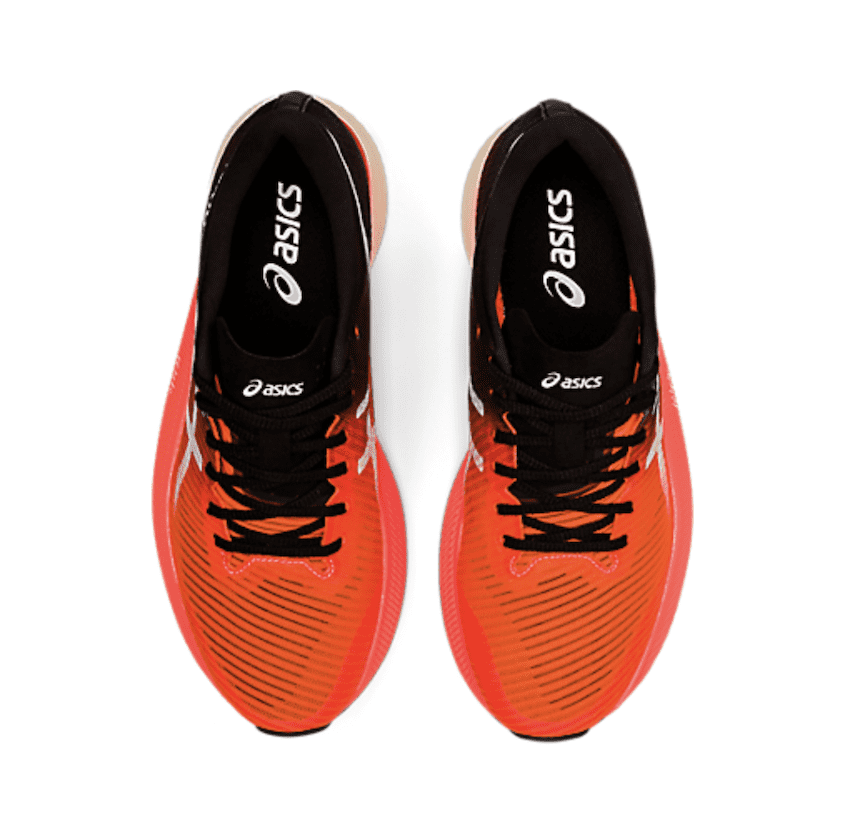
The midsole
The midsole is where the Metaspeed Sky gets its speed. The Sky has a slightly thicker midsole than the Edge, and it features ASICS’s FlyteFoam Blast Turbo cushioning. The FlyteFoam Blast is one of the lightest midsole cushioning systems that the team at ASICS has ever produced, but it still provides incredible bounce with each step. Hidden in that FlyteFoam midsole is the Sky’s carbon plate, which stretches the length of the shoe, from heel to toe. This lightweight plate improves stability while also helping to propel runners forward, adding to the shoe’s overall speed.
RELATED: ASICS’s Metaspeed Sky and Edge add to company’s carbon-plated lineup
The shoe’s curvature is also important to note, as this is specifically highlighted by ASICS in both the Sky and the Edge (which feature different degrees of curvature). The Sky has a sharp curve at the forefoot, which the team at ASICS says will help reduce ankle flexion. This will let runners save energy with every step, allowing them to run farther and faster.
The outsole
The Sky’s outsole is mostly covered by the company’s ASCISGrip rubber. This material provides great grip, even on wet or muddy paths. One downside is the outsole’s lack of durability in spots where the ASICSGrip doesn’t cover the sole’s foam. This foam wears out quickly, which is a reason to save the Metaspeed Sky for special occasions. It’s of course necessary to test it in training from time to time to get a feel for it and break it in, but for the most part, it’s probably best to keep it for racing or time trials so you don’t wear it out in training.
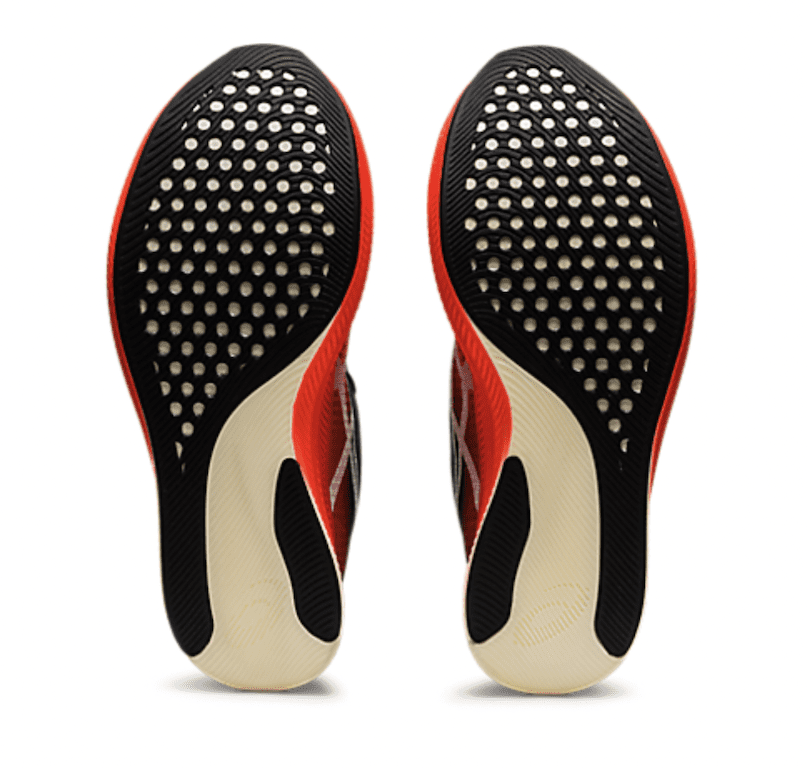
Final thoughts
Once again, this shoe is fast. It’s pricey, yes, but if you’re looking for a racing shoe, the Metaspeed will not disappoint. To get the most out of the shoe, it’s important to figure out which type of runner you are (which can be determined here). If you’re a stride runner, the Sky is for you, but if you find you’re a cadence runner, it’s best to wait for the Edge to be released on June 4. Whichever you choose, get ready to hit some fast times, because the Metaspeed lives up to the hype, and it’s a super shoe to rival all others on the market.
To find out more about the Metaspeed Sky and Edge, click here.


